[This the third part of an on-going effort to build a developmental model of mature masculine identity.
Part one here,
part two here.]
In the first two installments of what is becoming a seemingly endless exploration of ideas that might contribute to an integral model of masculine identity development, I looked primarily at existing models of development for racial identity and, to a lesser extent, gender identity. After doing so, I thought I might be ready to develop and propose my own model. Not so much.
One idea I want to examine is the difference between individualist and collectivist identity constructs and how that might impact development. Western culture is largely individualist, while most of the rest of the world is more collectivist in how they define identity and the self. I'll get to that soon, I hope.
For today, however, I want to present some ideas on attachment theory and how that impacts identity development.
* * * * *
While talking with a client this morning, I mentioned that is she wanted to understand her husband better, she might want to look at his mother and how the two related. Driving home, I thought about this more. One thing that I had discussed with my girlfriend, Jami, is that attachment style might have a serious impact on identity development.
In psychology, the old canard is that Freud blamed the mother for all of the dysfunctions of her children (Sommerfeld, 2006). In "Mother-Blaming and the Rise of the Expert" (Aidenbaum, 2006), the author looks at the ways in which mothers took the blame for masculine "failures" in the wider domestic issues facing America during the Cold War.
In a sense this is true. And while the second and third generation of Freudian scholars continued looking at the mother-child dyad, in what came to be known as
attachment theory (Bowlby, 1988). However, unlike Freud, Bowlby, Ainsworth (1978), and other attachment theorists do not BLAME the mother, even though they look at that primary adult-child bond (typically the mother is the primary caretaker) as an essential component of how the child is developing and how s/he will relate to others as an adult.
What they tend to focus on is how the child responds to the parent in the bonding dyad. The mother (or other caretaker) is who s/he is, and in general does the best s/he can with the experience and upbringing that formed their unique self. Children are adaptable, so however the parent behaves, the child will respond as best s/he can to seek love, attention, and
mirroring, a major part of the neo-Freudian
self psychology school.
* * * * *
Here is a brief definition of attachment (2004):
Attachment theory centers on the notion that emotionally responsive care, including love and nurturance from a primary caregiver, is essential for healthy and normal development. John Bowlby, the founder of attachment theory, used the term “attachment” to describe the emotional connection that develops between an infant and a primary caregiver through patterns of interaction that evolve over time. According to attachment theory, during the first year of life, infants develop special ties to their primary caregivers (i.e., attachment figures). Every infant invariably becomes attached unless no single caregiver is continuously present to care for the child (e.g., as in some institutions and orphanages). The particular nature or quality of the attachment relationship will vary, depending on the history of interaction patterns within the dyad. In particular, the consistency and appropriateness of the caregiver's response to the infant during times when the infant feels stressed or threatened, defines the pattern of interactions that develop during the first year. When the caregiver is consistently sensitive and responsive, a secure attachment typically ensues, whereas insensitive or inappropriate responding usually leads to an insecure attachment relationship.
After the attachment is formed, the infant shows a preference for the attachment figure. This is particularly evident during times of stress or emotional upset. When scared or distressed, the infant actively seeks comfort and reassurance from the caregiver and is not easily comforted by other individuals. The presence of the attachment figure is reassuring and enables more competent exploration of the environment. Mary Ainsworth, Bowlby's collaborator, noted that in a secure attachment relationship, the attachment figure provides both a “safe haven” during times of need and a “secure base” from which to explore.
Bowlby viewed the attachment system as a biobehavioral system that organizes behavior. The set goal of this system is to maintain proper access and proximity to the caregiver during times of need to ensure the protection and survival of the young. The attachment system operates in interaction and in collaboration with other behavioral systems (e.g., fear, exploration, sociability).
Attachment relationships are believed to play an important role throughout the life cycle. Although the specific behavioral markers of attachment change, their function remains the same. During times of need, infants, older children, and adults alike all seek comfort and support from significant others who are seen as more capable of coping with these situations. As individuals mature, new attachments are typically formed, but the early attachment relationships remain important because they are thought to exert an effect on subsequent behavior and close relationships.
During the attachment process,
Internal mental representations are created during the formation of a relationship. Mental representations relate not only to the self, but also to the attachment figure. As we age and enter into other intimate relationships, these internal representations help shape the ways we relate to others and how we behave.
Research has show that most people (roughly 65%, based on Mary Ainsworth's
Strange Situation Protocol) are securely attached.
Secure infants use their caregivers as a “secure base” for exploration. These infants rely on occasional visual, verbal, or physical contact with their mothers as a basis for their own initiated exploration of the environment. When their mothers leave the room, secure infants may or may not cry. On reunion, these infants either greet their mothers positively or, if upset, go to them for comfort and then shortly after return to activities associated with exploration. (Encyclopedia of Applied Psychology, 2004)
Three forms of insecure attachment have also been identified: anxious-avoidant, anxious-resistant (now known as ambivalent), and disorganized. Here are some brief definitions:
Infants who show patterns of insecure attachment of the avoidant type exhibit little or no reference to their mothers while exploring the room and show no overt signs of distress on their mothers' departure (although some studies have shown that these infants do show physiological markers of stress during separation). Most important, on reunion, these infants actively ignore and avoid their caregivers (e.g., by looking away).
Insecure—resistant (or ambivalent) infants are preoccupied with their mothers' presence, often unable to leave their sides even in light of curious attempts to explore their new environment. When their mothers leave the room, these infants become extremely distressed, and on reunion, the infants refuse to settle and to resume exploration, clinging to their mothers and at the same time expressing anger and dissatisfaction.
A fourth category of attachment classification was added in 1986 by Main and Solomon because studies showed that there are infants whose behavior does not correspond with any of the three existing classifications. During the Strange Situation, these infants showed sequences of unusual behavior with no clear purpose or orientation (e.g., freezing, falling prone). They seemed to lack an organized strategy for coping with the stress of the situation and looked “confused”; thus, they were classified as having disorganized/disoriented attachment to their caregivers. Disorganized classification is given in addition to one of the other classifications. In normative middle-class populations in North America, approximately 14% of infants are judged to be disorganized. The rate is somewhat higher (24%) in low-socioeconomic status samples.
These patterns are the ones that pertain to children in their primary relationships. As adults, these patterns are known as attachment styles, which suggests more fluid patterns of behaviors. Importantly, however, these styles do shape how we relate to others in intimacy.
One of the key issues in attachment is how the child learns emotional regulation. This definition also comes from the
Encyclopedia of Applied Psychology (2004).
Emotional regulation refers to an individual's ability to manage and cope successfully with various levels of emotional arousal, including negative emotions, in response to external events and internal stimulation (e.g., anxiety, excitement). Current views suggest that the attachment system itself provides a basic mechanism for emotional regulation. Studies show that during the years when the attachment relationship is formed, children who develop secure attachment ties to their caregivers express a variety of emotions freely, whereas children who form insecure—avoidant attachment ties tend to inhibit emotions. Overall, studies following children from infancy to early childhood have found that secure children are spontaneous in their expression of a variety of emotions, read the emotional cues of others better, and generally tend to be more emotionally positive. Insecure children, particularly those with an avoidant classification, tend to exhibit minimal emotional expressiveness overall, and particularly restrain the expression of negative emotions. Also, these children tend to misperceive others' emotional displays, and to exhibit inappropriate affect considering the emotional climate of the circumstances (e.g., show anger when expressing positive emotions would be more appropriate).
The ability to self-regulate is crucial to healthy relationships with others. As the definition points out, securely attached children are capable of freely expressing emotions, which is one of key traits in healthy intimate relationships. Those who cannot self-regulate either withdraw or need others to regulate their emotions for them - both styles are very unhealthy and damage intimacy.
This is when begin to see how this material relates to identity development - many theorists are now proposing a self model and an others model in identity development, as noted by
Diehl, Enick, Bourbeau, & Labouvie-Vief (1998):
Bartholomew and Horowitz (1991) suggested that if an individual's image of his or her own person and the image of others are dichotomized as being positive or negative, then four prototypes of adult attachment can be distinguished: secure (positive self–positive others), dismissing (positive self–negative others), preoccupied (negative self–positive others), and fearful attachment (negative self–negative others). Conceptually, this four-category model unfolds Bowlby's (1973) general internal working model into a model of the self, indicating the degree to which individuals have internalized a sense of self-worth, and a model of others, indicating the degree to which others are expected to be available and supportive (Bartholomew & Horowitz, 1991 ; Griffin & Bartholomew, 1994b).
Other variations of adult attachment have also been identified - and
Wikipedia actually has one of the best summaries.
Secure attachment: Securely attached people tend to agree with the following statements: "It is relatively easy for me to become emotionally close to others. I am comfortable depending on others and having others depend on me. I don't worry about being alone or having others not accept me." This style of attachment usually results from a history of warm and responsive interactions with relationship partners. Securely attached people tend to have positive views of themselves and their partners. They also tend to have positive views of their relationships. Often they report greater satisfaction and adjustment in their relationships than people with other attachment styles. Securely attached people feel comfortable both with intimacy and with independence. Many seek to balance intimacy and independence in their relationships.
Insecure attachment:
Anxious-preoccupied attachment
People who are anxious or preoccupied with attachment tend to agree with the following statements: "I want to be completely emotionally intimate with others, but I often find that others are reluctant to get as close as I would like. I am uncomfortable being without close relationships, but I sometimes worry that others don't value me as much as I value them." People with this style of attachment seek high levels of intimacy, approval, and responsiveness from their partners. They sometimes value intimacy to such an extent that they become overly dependent on their partners—a condition colloquially termed clinginess. Compared to securely attached people, people who are anxious or preoccupied with attachment tend to have less positive views about themselves. They often doubt their worth as a partner and blame themselves for their partners' lack of responsiveness. People who are anxious or preoccupied with attachment may exhibit high levels of emotional expressiveness, worry, and impulsiveness in their relationships.
Dismissive-avoidant attachment
People with a dismissive style of avoidant attachment tend to agree with these statements: "I am comfortable without close emotional relationships. It is very important to me to feel independent and self-sufficient, and I prefer not to depend on others or have others depend on me." People with this attachment style desire a high level of independence. The desire for independence often appears as an attempt to avoid attachment altogether. They view themselves as self-sufficient and invulnerable to feelings associated with being closely attached to others. They often deny needing close relationships. Some may even view close relationships as relatively unimportant. Not surprisingly, they seek less intimacy with relationship partners, whom they often view less positively than they view themselves. Investigators commonly note the defensive character of this attachment style. People with a dismissive-avoidant attachment tend to suppress and hide their feelings, and they tend to deal with rejection by distancing themselves from the sources of rejection (i.e., their relationship partners).
Fearful-avoidant attachment
People with a fearful style of avoidant attachment tend to agree with the following statements: "I am somewhat uncomfortable getting close to others. I want emotionally close relationships, but I find it difficult to trust others completely, or to depend on them. I sometimes worry that I will be hurt if I allow myself to become too close to others." People with this attachment style have mixed feelings about close relationships. On the one hand, they desire to have emotionally close relationships. On the other hand, they tend to feel uncomfortable with emotional closeness. These mixed feelings are combined with negative views about themselves and their partners. They commonly view themselves as unworthy of responsiveness from their partners, and they don't trust the intentions of their partners. Similarly to the dismissive-avoidant attachment style, people with a fearful-avoidant attachment style seek less intimacy from partners and frequently suppress and hide their feelings.
Attachment and Masculine Identity
Part of theory I am trying to generate suggests (at this point in the process - but this all continues to evolve as I read more source) is that a man's attachment style helps shape his masculine identity. Most men (apparently 65%) will not suffer from significant attachment issues, and will pass through normal developmental stages (yet to be named) as masculine identity development.
But more than 1/3 of us did not have the advantage of a secure attachment to our mothers or other primary caretaker. These men will pass through the various stages in different ways, or maybe not at all. The type of insecure attachment will determine how and where a man gets stuck in his development - and how to repair that damage.
However, and this is a bit of putting the cart before the horse, Dan Siegel (2007) is teaching us that mindfulness practice provides a form on intrapersonal attunement that can help to heal the failed interpersonal attunement in the attachment period. By paying attention to tour own inner states, we can learn to self-regulate our emotions, can reframe our internal mental representations based on our intrapersonal relationship to our self concept.
But all of this also rewires the brain and makes these changes personal. So even if we did not benefit from the most healthy attachment relationship to our mothers (or other person), we can heal that damage as part of our growth toward a mature and balanced masculine identity.
More to come.
References:
Aidenbaum, A.M. (2006). Mother-Blaming and the Rise of the Expert. Journal of History; University of Michigan; Fall, 2006.
Ainsworth, M. D. S., Blehar, M. C., Waters, E., & Wall, S. (1978). Patterns of attachment: Assessed in the strange situation and at home. Hillsdale, NJ: Erlbaum.
Attachment. (2004). In Encyclopedia of Applied Psychology. Retrieved from http://www.credoreference.com/entry/estappliedpsyc/attachment
Bartholomew, K., & Horowitz, L. (1991). Attachment styles among young adults: A test of a four-category model. Journal of Personality and Social Psychology, 61, 226–244.
Bowlby, J. (1973). Attachment and loss: Vol. 2. Separation. New York: Basic Books.
Bowlby, J. (1988). A secure base. New York: Basic Books.
Diehl, M., Elnick, A., Bourbeau, L., & Labouvie-Vief, G. (1998). Adult attachment styles: Their relations to family context and personality. Journal of Personality and Social Psychology, 74(6), 1656-1669. doi:10.1037/0022-3514.74.6.1656.
Griffin, D., & Bartholomew, K. (1994b). Models of self and other.Fundamental dimensions underlying measures of adult attachment. Journal of Personality and Social Psychology, 67, 430–445.
Main, M., & Solomon, J. (1986). Discovery of a new, insecure-disorganized/disoriented attachment pattern. In M. Yogman & T.B. Brazelton (Eds.), Affective development in infancy (pp.95–124). Norwood, NJ: Ablex.
Siegel, D. (2007) The Mindful Brain: Reflection and Attunement in the Cultivation of Well-Being. New York: W.W. Norton & Company.
Sommerfeld, D. P. (2006). The origins of mother blaming: Historical perspectives on childhood and motherhood. Infant Mental Health Journal; 10(1):14 - 24. DOI: 10.1002/1097-0355(198921)10:1
Wikipedia. (2010). Attachment in adults. http://en.wikipedia.org/wiki/Attachment_in_adults
Tags:
psychology, attachment, parenting, childhood, masculinity, identity, John Bowlby, Mary Ainsworth, masculine identity, developmental model, development, men, manhood, Frued, attachment theory, adult attachment style, Internal mental representations, Strange situation protocol, secure attachment, anxious-avoidant attachment, anxious-resistant, ambivalent attachment, disorganized attachment
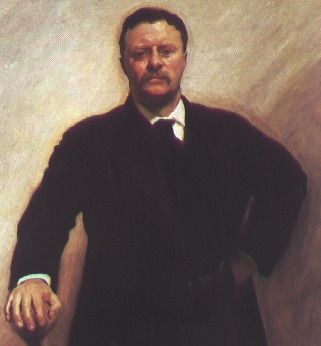







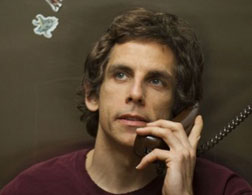
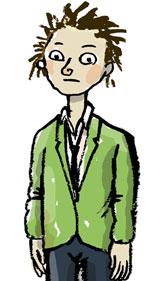
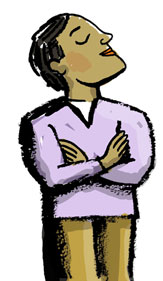
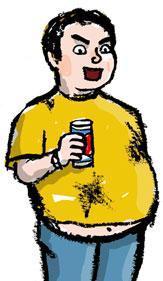
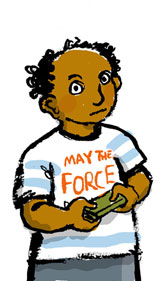
Tue, Mar 16, 2010